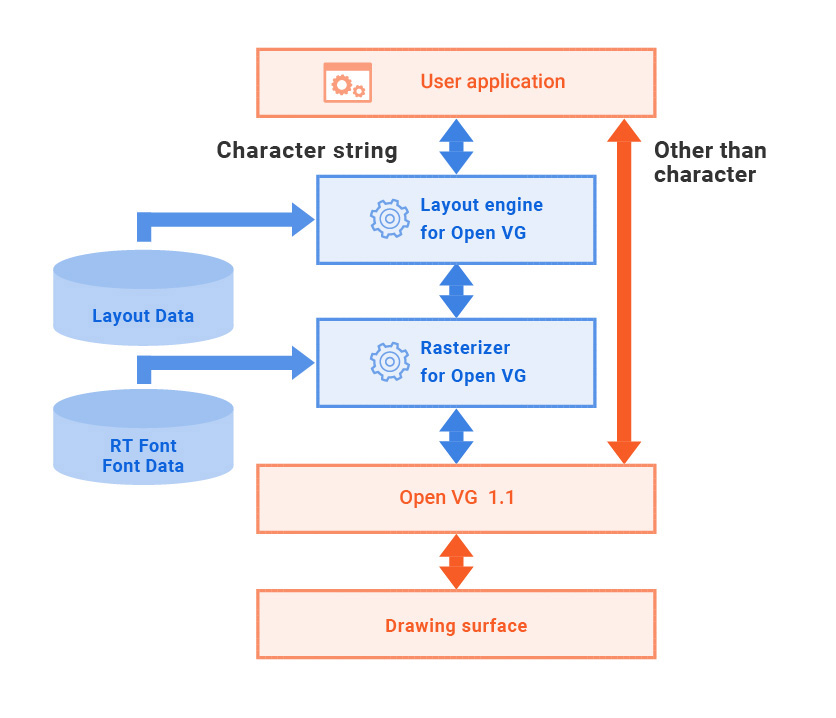RT Font (Scalable fonts)
What is RT Font?
Among scalable fonts, in contrast to TrueType Fonts, RT Font features low data volume, making it suitable for embedding.
RT Font is in our company's own original format so there isn't compatibility with the fonts of other companies.
Low data volume structure
TrueType Fonts use the full outline of characters, but RT Font characters are configured with elements (parts). Since the elements (vertical lines, horizontal lines, "migiharai strokes," etc.) are used in all characters, data volume can be held down through the common use of kanji radicals, etc.
With TrueType Fonts
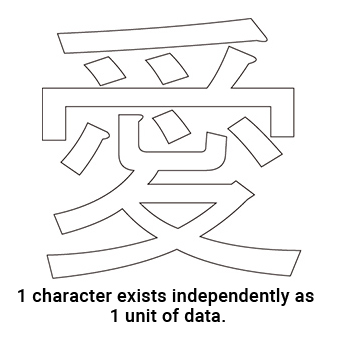
With RT Font
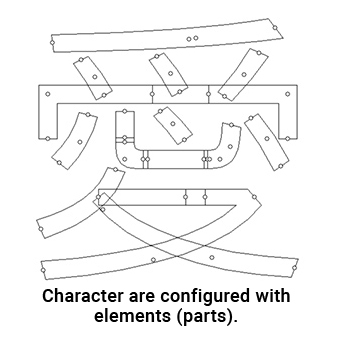
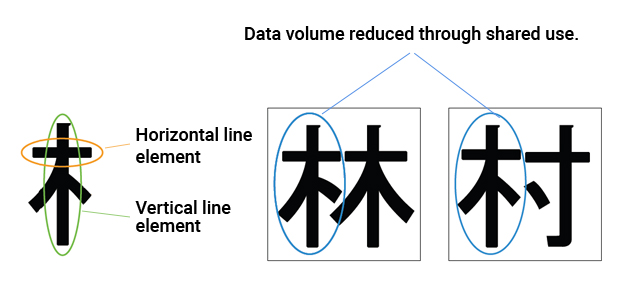
Differences with TrueType Fonts
Weight adjustment
Using just the data for a single font, the thickness of the line (weight value) can be adjusted.
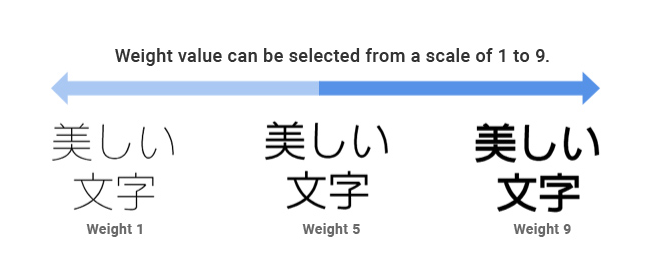
Borders
A border may be added to the rasterized image of a character to enhance its affinity with the background color (image).
Border widths can also be adjusted.

Rendering mode selection
For straight lines, you can select “Sharp Mode” for non-grayscale rendering and “Smooth Mode” for grayscale rendering.
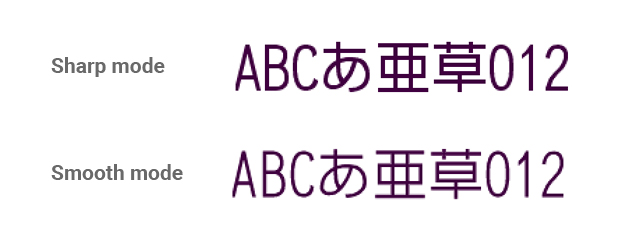
Vertical/horizontal arbitrary multiplication (Sharp Mode only)
This ensures the design consistency of characters by maintaining the width balance of horizontal and vertical lines whether a character is displayed wide or narrow.

Other functions
Anti-aliasing (grayscale)
Characters can be represented more smoothly with the use of four- and sixteen-level grayscale display.
Processing is faster with fewer levels.

Rotation
The rasterized image of a character can be rotated in increments of one degree.

Oblique
The upper part of the rasterized image of a character may be slanted in 1 dot increments.

128 × 128 dot example
Cache
High-speed rendering is possible by holding the rendered character (rasterized image) in memory, and calling the character directly from memory (without rasterizing) the next time it is rendered.
Bitmap Font replacement
The inclusion of Bitmap Font with characters forms optimized for each size makes it possible to display even small characters, such as those of 10 or 12 dots, without loss of readability.
Note: Use of the bitmap replacement function increases file size by the data volume of the bitmap font.
Scalable font
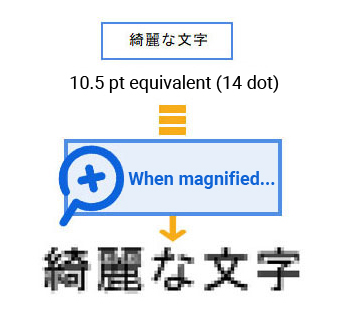
Replaced bitmap font

Language and font list
If you want languages or typefaces not in our product line, please inquire via the free consultation function at the bottom of this page.
Japanese
Simplified Chinese characters
Rasterizer and Layout Engine
Rasterizer
With outline fonts (RT Fonts, etc.), characters cannot be displayed using the font file alone.
It is necessary to have rasterizer software that rasterizes the font data into character images.
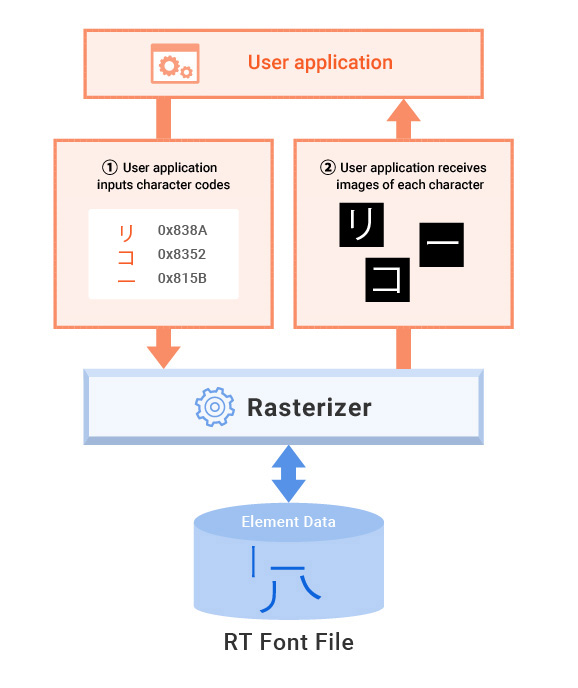
Layout Engine (option)
The Layout Engine takes the rasterizer-generated individual character images and puts them in character strings.
It can also do a variety of processing such as adjusting character and line spacing and rotating character strings.
This software is necessary to correctly display languages with complex writing rules (Arabic, Thai, etc.).

Detailed explanation here ↓
OpenVG support
We can provide a rasterizer and Layout Engine that support the OpenVG1.1 API (Application Programming Interface).
For more information, please use the free consultation function below.
